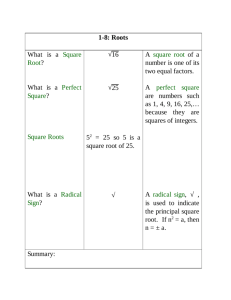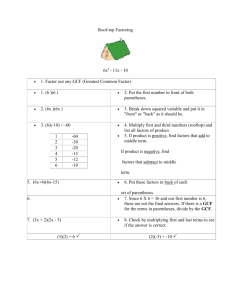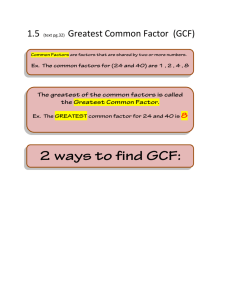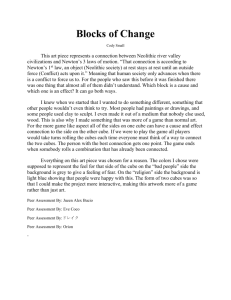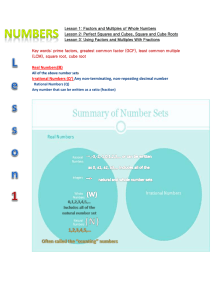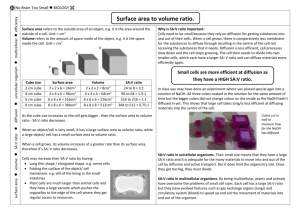Factoring Sum and Differences of Cubes
advertisement
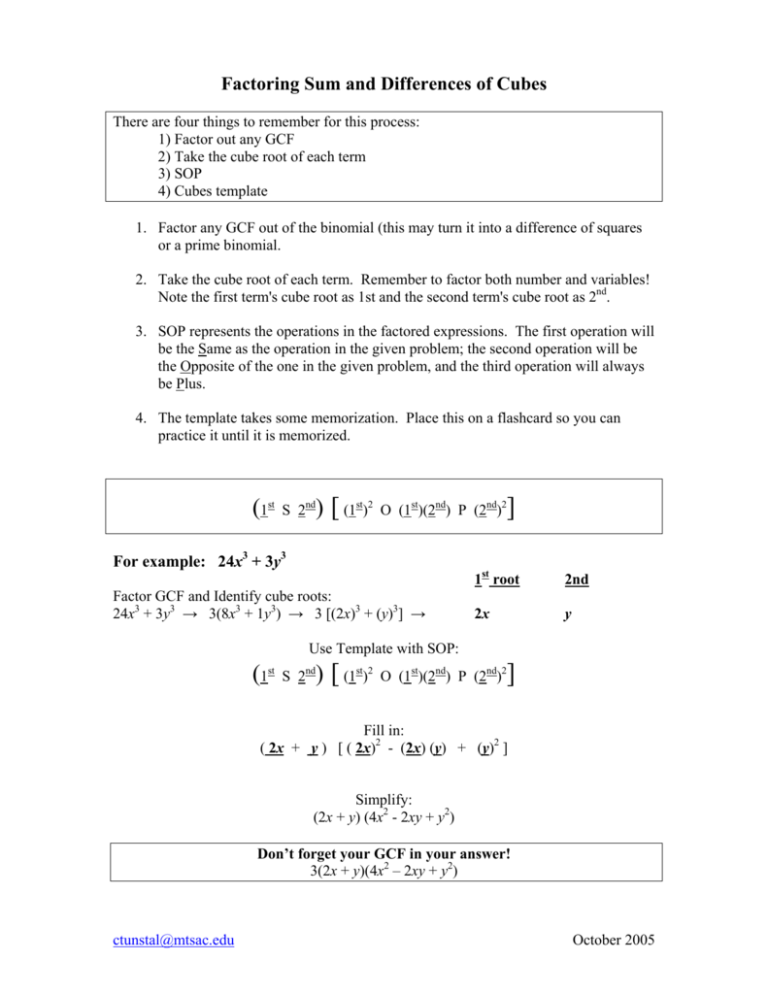
Factoring Sum and Differences of Cubes There are four things to remember for this process: 1) Factor out any GCF 2) Take the cube root of each term 3) SOP 4) Cubes template 1. Factor any GCF out of the binomial (this may turn it into a difference of squares or a prime binomial. 2. Take the cube root of each term. Remember to factor both number and variables! Note the first term's cube root as 1st and the second term's cube root as 2nd. 3. SOP represents the operations in the factored expressions. The first operation will be the Same as the operation in the given problem; the second operation will be the Opposite of the one in the given problem, and the third operation will always be Plus. 4. The template takes some memorization. Place this on a flashcard so you can practice it until it is memorized. (1st S 2nd) [ (1 ) st 2 O (1st)(2nd) P (2nd)2 ] For example: 24x3 + 3y3 Factor GCF and Identify cube roots: 24x3 + 3y3 → 3(8x3 + 1y3) → 3 [(2x)3 + (y)3] → 1st root 2nd 2x y Use Template with SOP: (1st S 2nd) [ (1 ) st 2 O (1st)(2nd) P (2nd)2 ] Fill in: ( 2x + y ) [ ( 2x)2 - (2x) (y) + (y)2 ] Simplify: (2x + y) (4x2 - 2xy + y2) Don’t forget your GCF in your answer! 3(2x + y)(4x2 – 2xy + y2) ctunstal@mtsac.edu October 2005

